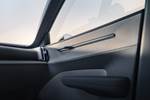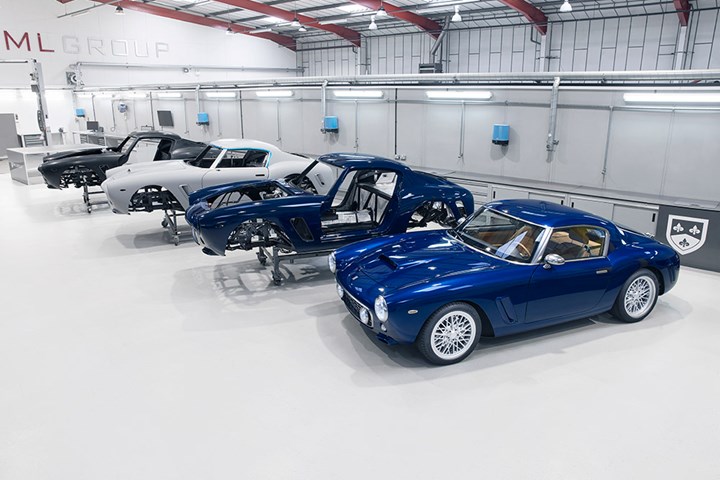Short Wheelbase automotive series shows off composites craftsmanship
RML Group’s hand-built process, taking 9 months/car, melds traditional craftsmanship with state-of-the-art technology. The first three cars are on track for customer deliveries.
This year, high-performance automotive engineering company RML Group Ltd. (Wellingborough, U.K.) revealed the imagery from the initial production run of its composites-intensive Short Wheelbase car model. The high-performance GT is reported to pay homage to the driving purity of super cars from the past, while offering 21st-century levels of comfort and convenience.
The lead, four-car image shows how the Short Wheelbase evolves during production, from when its carbon fiber body is first mated to a chassis, through to a fully completed car, in this case represented by RML’s pre-production prototype, Car Zero.
Furthest from the camera, is a Short Wheelbase near the start of its 9-month build. This car has already had its chassis restored and powder-coated, and has just been fitted with an unpainted, two-piece carbon fiber body, which weighs just 42.5 kilograms. RML notes that 99% of its myriad dimensions are within a 2.5-millimeter tolerance — 60% being 1 millimeter or less after being “dry-fitted” to the Short Wheelbase’s steel backbone chassis. The rear clam itself comprises everything aft of the car’s A-pillars, including windscreen, rear-screen and door openings.
The next Short Wheelbase in line has progressed substantially from the first, RML notes, with its main panels — doors, bonnet and boot — fitted, and the entire body fully primed.
Finally, parked next to Car Zero, is the first customer Short Wheelbase. This car has already been in paint (an in-house process, like most others), and is part-way through having its wiring harness installed, along with its cabin being insulated. Next will come the car’s 5.5-litre, 479bhp V12 engine, its powertrain (including 6-speed manual gearbox and limited-slip differential), and bespoke exterior and interior trim.
Achieving the paintwork’s rich luster seen on the two cars closest to the camera is said to be an arduous task, involving layers of special carbon primer, regular primer and a silver base coat that gives the car’s final coat a real “pop.” Even its carbon fiber composite parts that remain unpainted — for example, around the door shuts — are treated with a clear carbon primer, flatted back and then coated with a smoked-carbon lacquer.
“Each Short Wheelbase is hand-built,” Michael Mallock, RML’s CEO, explains. “But we also use the most advanced technology to make sure that the quality of its build meets the very highest levels. All parts are laser-cut to minimize deviation from specification, and the jig we use only allows a maximum 0.25-millimeter tolerance, meaning that all 30 cars in our production run will be produced to a consistently high standard.”
Related Content
-
The state of recycled carbon fiber
As the need for carbon fiber rises, can recycling fill the gap?
-
Plant tour: Joby Aviation, Marina, Calif., U.S.
As the advanced air mobility market begins to take shape, market leader Joby Aviation works to industrialize composites manufacturing for its first-generation, composites-intensive, all-electric air taxi.
-
ASCEND program update: Designing next-gen, high-rate auto and aerospace composites
GKN Aerospace, McLaren Automotive and U.K.-based partners share goals and progress aiming at high-rate, Industry 4.0-enabled, sustainable materials and processes.

















